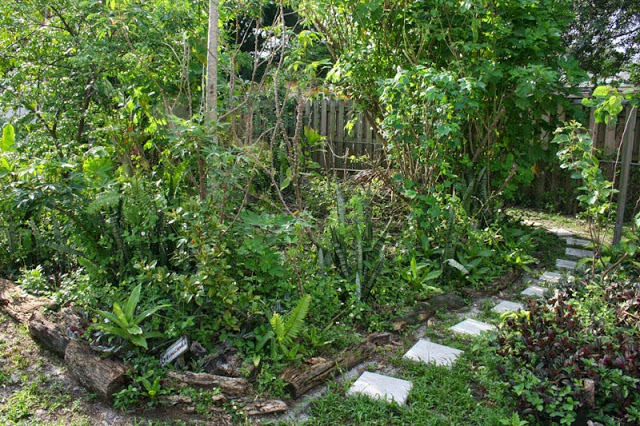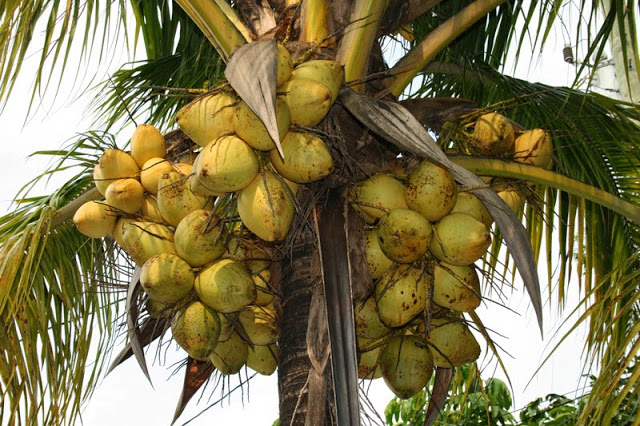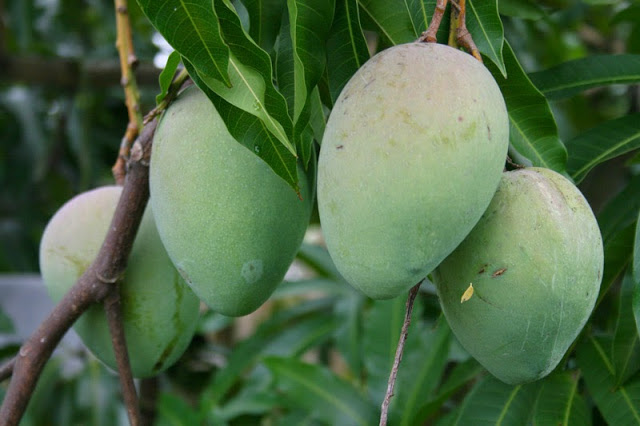One of the interesting things about creating a food forest and then not visiting it for over a year is that you get to see it progress or devolve in jumps.
Yesterday I mentioned that some of the trees and plants we added are now deceased – and we also saw many of the interesting “weeds” that have popped up to fill in the herbaceous layer.
That’s the way a forest works. If you don’t fill in all the gaps in your food forest, something else will. As you can see in the image above, there’s a lot going on in the understory layers – most of which is not edible. My chaya is looking good though the cassava is not happy… and they’re surrounded by some weird neighbors. Ferns, Spanish needle, green and purple wandering Jew, Mother-in-law tongues, Surinam daisies… it’s quite a pretty mess. You could probably start an ornamental nursery with the cuttings from this patch of un-mown jungle.
To the left of the main food forest is the perennial salad garden I created a couple of years ago. The survivors there include a thriving katuk, a spindly monk’s cap/Turk’s cap hibiscus and the longevity spinach.
Up above, the coconut palm is bearing more nuts than it ever has:
I planted that tree when I was 15. A couple of years ago Dad and I weeded out the asparagus fern from around its base and planted that salad garden. It really likes being without the competition of those root-strangling asparagus ferns.
As does the Natal plum out front:
There were multiple fruit on this bush when I showed up. It used to look really sad until we took out the asparagus fern and gave it a new lease on life. Now it’s covered with blooms and fruiting regularly. I’m hoping to grow some of these up here in North Florida. Though it’s a stretch, I have seen one growing without frost protection in Citra. Definitely worth trying.
Another happy tree is the mango Mom planted out back 4-5 years ago.
The piles of mulch and lack of grass competition have made this mango a stellar producer. It’s easily 14′ tall right now and loaded – absolutely loaded – with fruit.
If I had to guess right now, I’d say that this South Florida food forest project is already yielding about 300-400lbs of food every year, mostly thanks to the starfruit, the mangoes and the acerola cherry. One the chocolate pudding fruit, avocado, tamarind, canistel and other trees kick in… it’ll get ridiculous.
Tomorrow we’ll take a look at the other trees we added last week.
(To see all the posts on The Great South Florida Food forest Project, go here!)
Support this site – buy David’s book Create Your Own Florida Food Forest on Amazon!






2 comments
I have natal plums in my yard here in Phoenix, Az. If they ever fruit I might give them a try.
Hmm. Not fruiting for you? I've heard that extra phosphorus is supposed to kick them into gear.
Comments are closed.